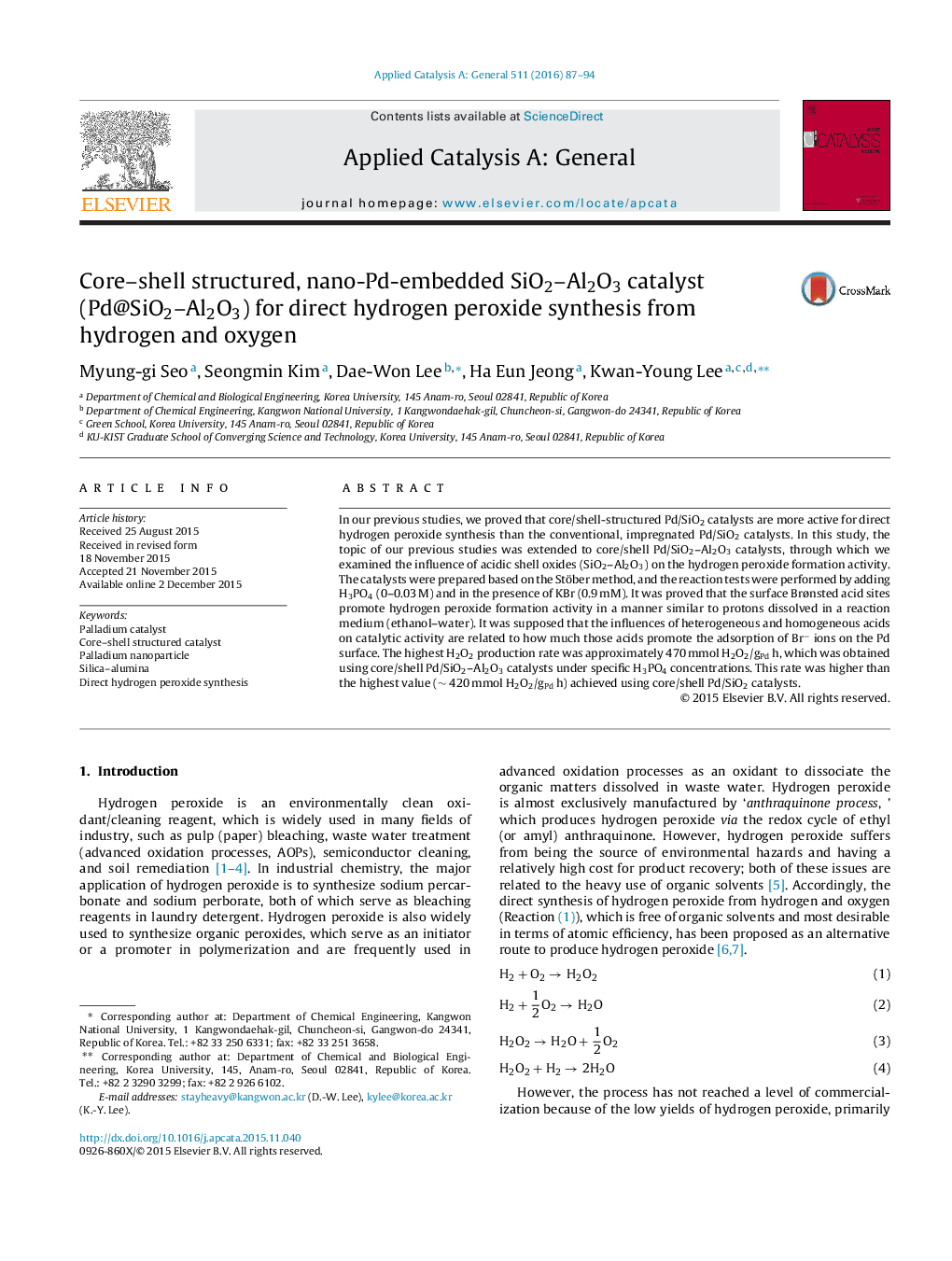| کد مقاله | کد نشریه | سال انتشار | مقاله انگلیسی | نسخه تمام متن |
|---|---|---|---|---|
| 38975 | 45799 | 2016 | 8 صفحه PDF | دانلود رایگان |

• We prepared core–shell Pd@SiO2–Al2O3 catalyst.
• Br− adsorption increased with the increase of acidity on the catalyst.
• H2O2 formation was influenced by Br− adsorption and acidity of the catalyst.
In our previous studies, we proved that core/shell-structured Pd/SiO2 catalysts are more active for direct hydrogen peroxide synthesis than the conventional, impregnated Pd/SiO2 catalysts. In this study, the topic of our previous studies was extended to core/shell Pd/SiO2–Al2O3 catalysts, through which we examined the influence of acidic shell oxides (SiO2–Al2O3) on the hydrogen peroxide formation activity. The catalysts were prepared based on the Stöber method, and the reaction tests were performed by adding H3PO4 (0–0.03 M) and in the presence of KBr (0.9 mM). It was proved that the surface Brønsted acid sites promote hydrogen peroxide formation activity in a manner similar to protons dissolved in a reaction medium (ethanol–water). It was supposed that the influences of heterogeneous and homogeneous acids on catalytic activity are related to how much those acids promote the adsorption of Br− ions on the Pd surface. The highest H2O2 production rate was approximately 470 mmol H2O2/gPd h, which was obtained using core/shell Pd/SiO2–Al2O3 catalysts under specific H3PO4 concentrations. This rate was higher than the highest value (∼ 420 mmol H2O2/gPd h) achieved using core/shell Pd/SiO2 catalysts.
Figure optionsDownload high-quality image (195 K)Download as PowerPoint slide
Journal: Applied Catalysis A: General - Volume 511, 5 February 2016, Pages 87–94